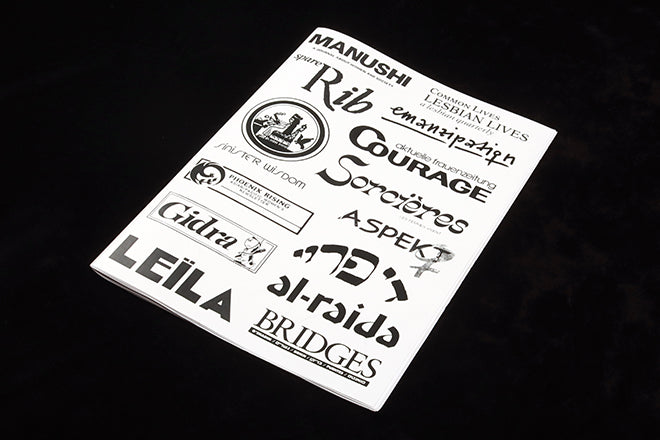
Feminist Findings
Last year we hosted two of the principals from sixties women’s mag Nova here at the Shop. A celebration of the reprinting of the book ‘Nova: 1965–1975’, art director David Hillman and fashion editor Caroline Baker reminisced together as part of our magCulture Meets series.
A happy occasion – David and Caroline hadn’t seen each other for decades – saw the two trading tales of the magazine. I’d heard David talk about Nova before, and he does it very well, and Caroline’s stories matched his. As well as a strongly held fondness for each other, there was an interesting dynamic between the two, a hangover from their working relationship of 50 years ago: he had been the boss, but she clearly felt equal now.
At one point I asked them how Nova, a revolutionary women’s mag in so many ways, had mainly been led by men. David immediately denied that was the case, while Caroline gently communicated her skepticism at his response. Both reactions spoke volumes.

Zoom forward to ‘Feminist Findings’, a new publication from Berlin that presents research into 23 different feminist publications from across the world. London researcher Floriane Misslin writes about Nova, passing over its well-covered creative reputation and instead pointing out, ‘Nova not only stood apart from other women’s magazines of the time because it addressed feminist issues, but also because its covers… were sexy. Extremely so.’

Misslin compares its covers to those of Playboy, still a relatively new magazine at the time, and a clever series of illustrations accompanying the essay demonstrate striking visual similarities between covers of the two mags (above).
She assigns their sexual nature to Hillman, and asks, ‘How did Nova contribute to women’s emancipation as a publishing product when it was adorned with Playboy look-alike figures?’ I expect everyone involved in making those covers would deny they were sexist, but its fascinating to see another generation’s reading of a magazine generally held in such high regard.
A supporting claim that a third of Nova’s readers were men is on weaker ground, women’s magazines have always had plenty of male readers. Nevertheless, it’s refreshing to see Nova examined without the usual overbearing respect.

The piece is just one of many excellent reads in this one-off publication, the result of a workshop scheduled by Le Signe at the Centre National du Graphisme in Chaumont, France but forced online by Covid. Published by LiP Collective and edited by new platform Futuress, the essays cross the continents and time to highlight feminist magazines combating the traditional structures of religion, politics and power.
The editors note the positivity of the project – under Covid lockdown each writer followed their own research and leads, ‘While isolated at our respective kitchen tables and bedroom desks, we came together through the beams of our computer screens to dive into the past…’
The 23 contributions each take up a page, and each has been designed by its writer. They sit together well, the text-heavy designs making the most of the vivid Risograph printing colours, the result feeling zine-y and temporary, a work in progress proposing multiple future research directions.
For instance, as well as Nova, fellow sixties magazine Spare Rib is included. Silva Baum examines it’s ever-changing design language and asks whether this came about through trial and error or strategy. ‘A constantly changing designs suggests an openness to change,’ writes Baum. It’s just one fascinating thought among many: should a revolutionary voice follow normal design rules?

Alongside these familiar and openly available, commercially-orientated magazines, there are rich examples of smaller, local projects from different eras and continents that were regarded as subversive by those in power and thus needed to hide their existence. Some are straightforward research porojects – Maya Ober goes in search of early Jewish feminist publications in Poland (above), eventually discovering Froyen, published in 1925 with an opening note declaring, ‘The doors of the Jewish press are still strongly shut for us, women!’
Other contributions appear in the form of interviews (New York’s Dyke), critiques of logo punctuation (Tunisia’s Lëila), a poem (New Yorks’s Heresies) and a letter to the editor (Berlin’s Courage). We also visit India, Russia, France (to examine the roots of the word ‘feminism’) and Lebanon. And we learn how history opens things up – the end of the Cold War allowed the launch of Aspekt in Slovakia.
While the publications discovered are of course the focus of the project, the different starting points and personal tales of research are just as compelling. Perhaps this is the most satisfying aspect ‘Feminist Finding,’ – the way each contribution records its own unique story of discovery.
An exhibition based on ‘Feminist Findings’ continues at A—Z Presents, Berlin, until 24 September.
Editors: Nina Paim, Corin Gisel and Madeleine Morley


